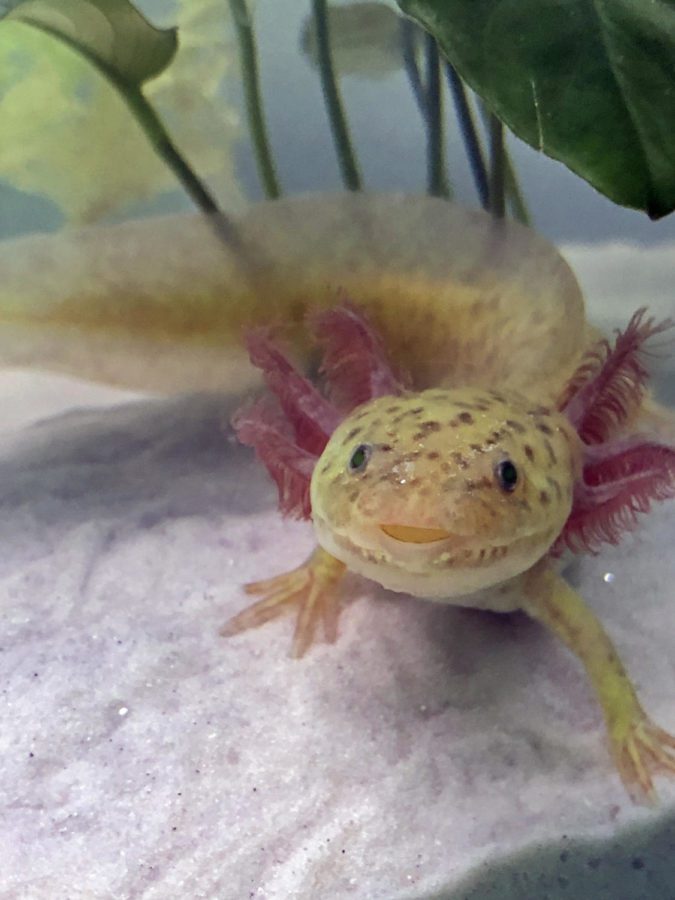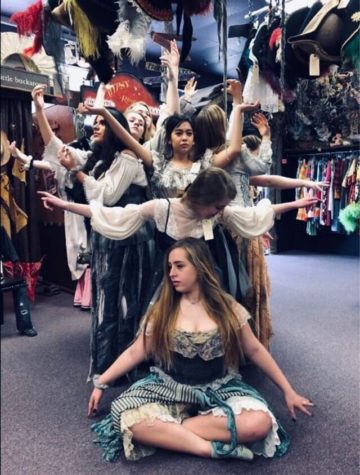Senior columnist covers creature preservation
An axolotl swims in a tank in the home of senior columnist Nicole Miguez. According to Miguez, axolotls are a “unique, yet critically endangered species.” In the attached column, she explores details students should consider about this creature before bringing one home as a family pet. “Many axolotl owners research for more than a year before they start to buy supplies for owning axolotls,” Miguez said.
Miguez suggests potential owners
research axolotls prior to purchase
Senior Nicole Miguez owns multiple exotic pets, specifically two different types of geckos and an axolotl. Miguez wrote the following column as her first installment of a series of articles on creatures and how students and their families can help preserve them.
Axolotls are an unusual species that are indigenous to Mexico. Wild axolotls live exclusively in Lake Xochimilco, a lake near Mexico City. As of 2013, axolotls have officially been labeled as critically endangered due to a four-month long search, resulting in only two living axolotls found. Their population decline is mainly due to the urbanization of Mexico City, which causes pollution in the waters. Predators and other invasive species were also introduced to Lake Xochimilco, further decreasing the population. Axolotls were once also a staple part of the Aztec diet and were sold in Mexican markets as food. On top of that, axolotls are frequently used for scientific research due to the unique traits they exhibit.
Axolotls have the ability to regrow entire limbs and can even regenerate entire organs, including their jaws, spines and parts of their brains. Axolotls exhibit many unique traits, such as gills that resemble tentacles rising off of their heads. They have the body type of overgrown tadpoles that are nearing the end of metamorphosis. Speaking of metamorphosis, axolotls are actually a type of salamander that never fully completes metamorphosis, remaining in a ‘water-dog’ state for life. Axolotls can grow to up to 18 inches long. Also, when an axolotl is below 6 inches long, they are often cannibalistic and should not be paired with another axolotl until they surpass 7 inches. A healthy axolotl is expected to live for about 10-15 years, in ideal conditions.
Although axolotls are critically endangered in the wild, they are thriving in captivity. Many people across the United States have axolotls as pets, and that number is steadily growing. While axolotls are popular pets, they certainly aren’t for beginners. Those who are interested in purchasing their very own axolotls are urged to do as much research as possible on axolotls until they know everything there is to know. Many axolotl owners research for more than a year before they start to buy supplies for owning axolotls.
Axolotls are sensitive creatures that require water changes once a week. They must have water at a temperature of around 66 degrees. Axolotls can easily get impacted if you have sand or pebbles as an aquarium substrate, so it is recommended to either have a bare bottom tank or extremely fine sand.
There are multiple other illnesses that an axolotl can develop. So, once again, anyone interested in owning one should do extensive research.
Your donation will support the student journalists of Prosper High School. Your contribution will allow us to purchase equipment and cover our annual website hosting costs.














